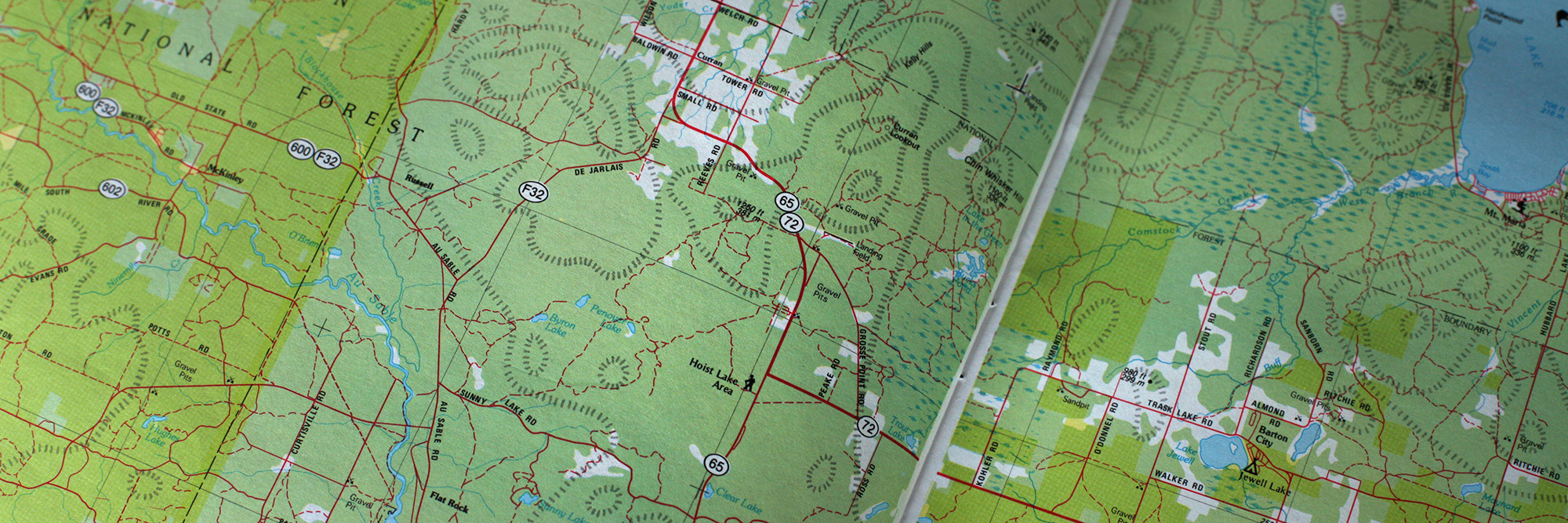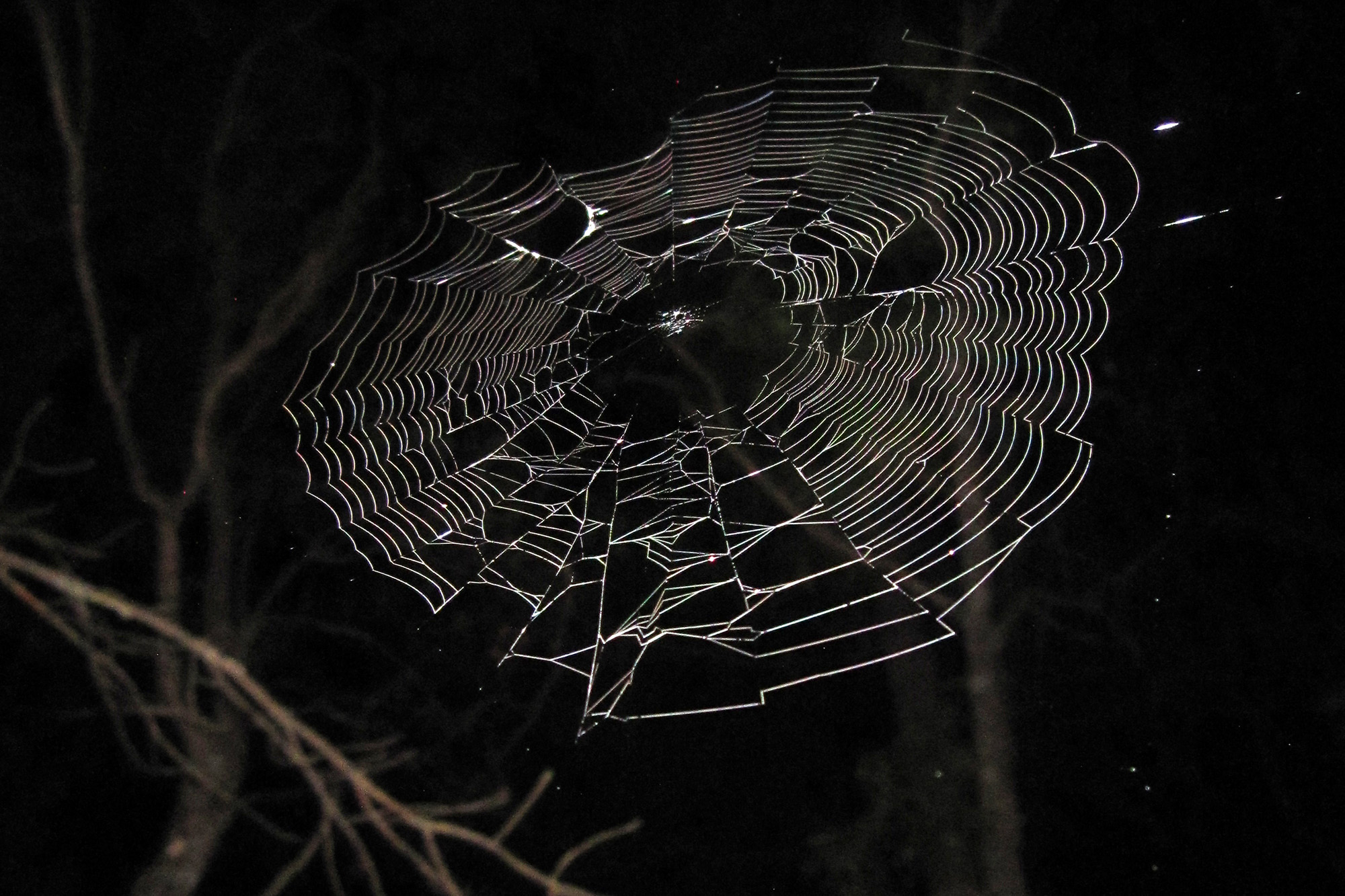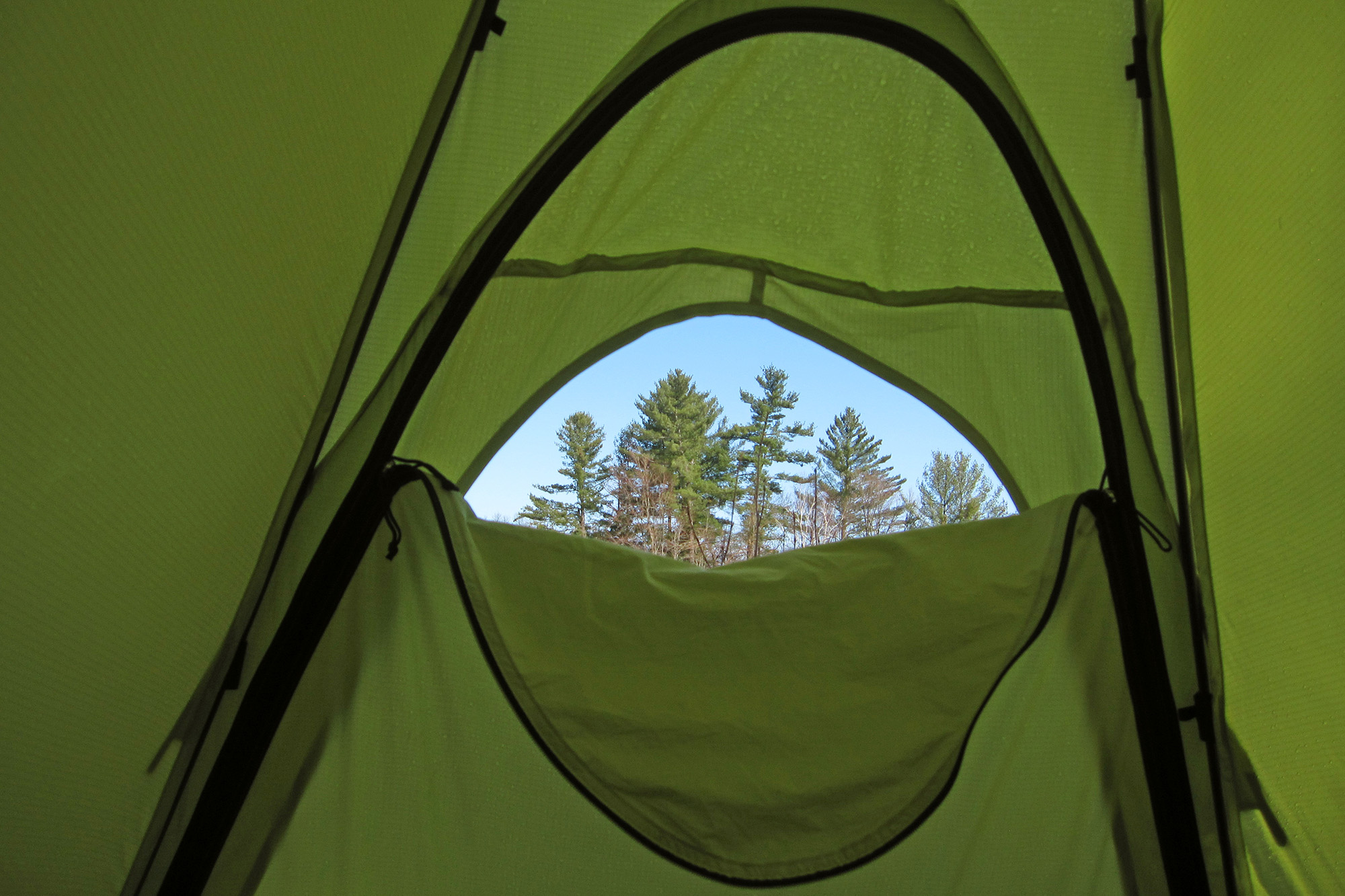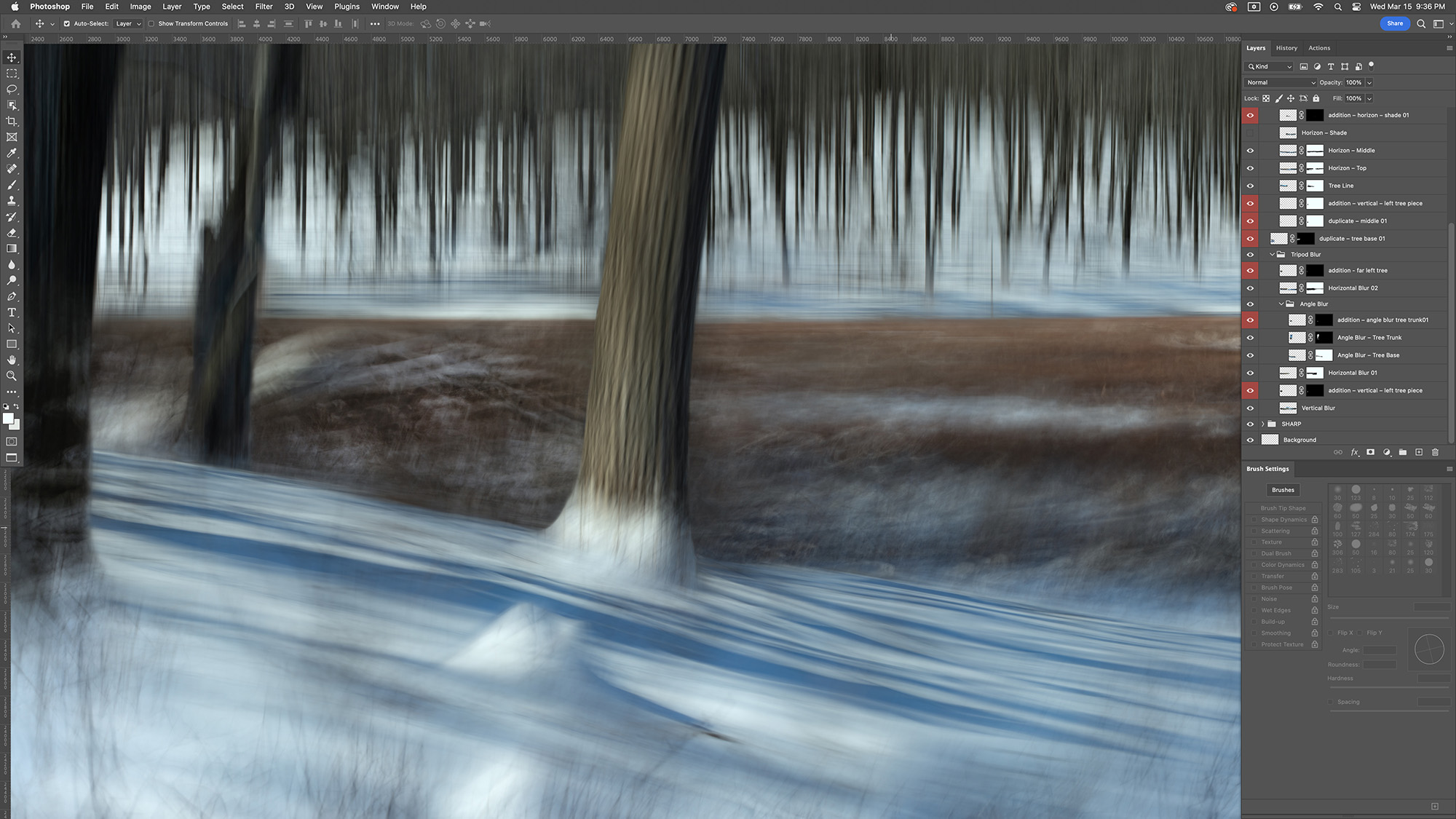
Map of Green
Shortly after moving to Michigan, I flipped open a Rand McNally Road Atlas and pinpointed the largest patch of green in the Lower Peninsula. Following the unknowns of a paper map to whatever end felt visceral in a way that smartphones and Google Earth would soon take away. In the middle of that patch of green I bushwhacked into the woods without destination. I couldn’t have known then that over the next fifteen years I would trace the same path dozens of times, always with a camera, looking for new ways to interpret the landscape.



“Between periods of bone-chilling rain that define April in Michigan, days like these bring a lapse of memory to the forest wanderer, winter’s ferocities and summer’s nuisances impossibilities not worth considering. And after what could have been a minute but might have been an hour, the solitary traveller bids his sitting-log farewell and heads due north with the symphony of spring in his ears.”
–Sunday, April 18, 2015



“Swan song trumpets the twilight, a call to mass.
An organ of geese and the procession begins.
Peace be with you, and also with you.
Red-tipped blackbirds shaking hands from afar.
The sun rises … a miracle.
I alone in this cathedral, consuming the sacrament.
Announcements from woodpeckers conclude morning mass.”
–Easter Sunday, April 4, 2021



“That I might lie here all day and listen to the storm front approach. That I might be here to feel the gale that follows, to watch the transformation of late-season snow. In real time I can sense the beginnings of this great change: birds bellowing louder while they still can, the first breath of wind in 12 hours, then the first gust, the crash of a tree in a forest far off. Huron. Hoist. Penoyer. The names I’ve called this place have become more specific with time and more important with age, and I doubt I’m the first to make that correlation.”
-Easter Sunday, April 12, 2020



For the first time this winter, I snowshoed my standard route in February. It’s two miles as the crow flies, but probably closer to three after bobbing and weaving through trees, swamps and lakes while towing a gear sled. I photographed the landscape sharp only once. My intent with this piece is to include no sharp elements in the final image, only motion blurred photographs, so the sharp layer is strictly used as a reference to align all else. Hand stitching the 109 photographs of the sharp layer took 9 hours. I experimented with Photoshop’s Photomerge, which stitched the landscape with surprising accuracy in only a few minutes, but the program caused aspects of the image, most notably the left-frame tree, to distort in ways that would make it difficult to align additional images.
I’m approaching this seasonal blend differently than I have in the past. Rather than shooting the entire scene in as many ways as possible every time I go, I’m only shooting elements of the scene that look good at the time, then blending them into the master image promptly after returning home, so that by year’s end, I’m targeting what’s left with intent. As a winter landscape, the only elements I knew would be useful were the horizon hillside and marsh. I didn’t shoot the foreground at all because that’ll best be captured as autumn orange. I didn’t shoot the sky at all because that’ll best be captured as a summer thunderstorm, or perhaps a rainbow, or if I’m lucky … northern lights.





